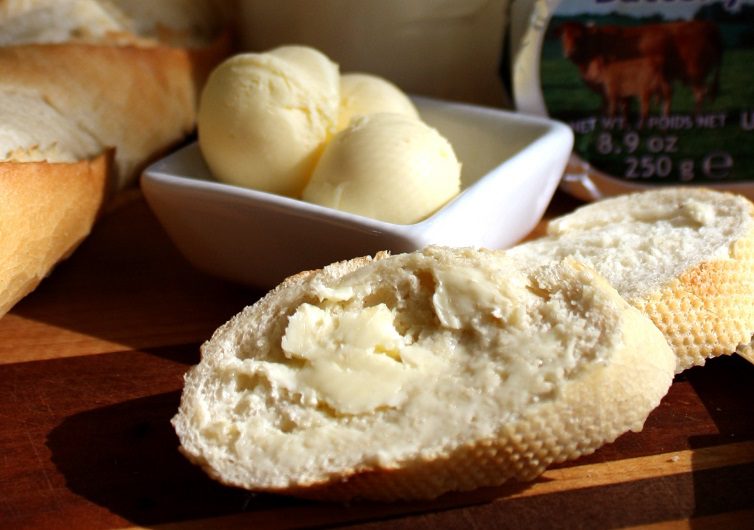Beware of Big Butter?
May 15, 2024 by DarcieIt seems fitting that a couple of days after I post about the increased demand for cottage cheese, I spied another article about how the dairy industry is using social media partnerships to drive up their sales. It seems that people are not just rediscovering the joys of cottage cheese, they are being paid to promote cheese, butter, and other dairy products. The main driver of this is a marketing group called Dairy Management, “whose funding largely consists of legally mandated fees collected from farmers.”

Dairy Management spends millions of dollars each year to cook up new ways to promote milk, cream, butter, and cheese. It partners with influencers to get them to talk up a particular product or feature it in a new recipe. The group also works with large companies like McDonald’s, going so far as to fund food scientists to work at Mickey-Ds corporate offices to find new ways to incorporate dairy into the menu. This seems to have paid off, since about 80% of McDonald’s products now contain some form of dairy.
While it seems as though the marketing is working as intended, it doesn’t appear that all of this growth is helping small dairy farms succeed. The number of small to medium-sized dairy operations in the US has plummeted by 75% in the last 30 years. There’s an environmental cost as well: with increased demand comes an increased carbon footprint. A United Nations report indicated that over a ten year period, the dairy industry’s greenhouse gas emissions climbed by 18 percent.
Some farmers and environmentalists don’t think continuing this demand-side strategy is the best path to follow, and are looking to implement a supply-based solution, similar to the one that Canada uses. Using this method, the amount of dairy capacity is capped and farmers are guaranteed a steady price instead of seasonal fluctuations that can end up with farmers losing money. It also encourages smaller farmers to stay in business, ameliorating some of the environmental effects of mega-farms.
The Canadian system is not without issues, however. Critics say it stifles innovation and drives up dairy prices. Americans who travel across the border are usually shocked at the price of milk compared to what they pay in the US. Supporters of the supply-side system note that while supermarket prices may be lower, there are hidden costs that include environmental degradation.
Categories
- All Posts (6940)
- Antipasto (2135)
- Author Articles (247)
- Book News (935)
- Cookbook Giveaways (983)
- Cookbook Lovers (257)
- Cooking Tips (109)
- Culinary News (299)
- Food Biz People (552)
- Food Online (791)
- Holidays & Celebrations (272)
- New Cookbooks (149)
- Recipes (1500)
- Shelf Life With Susie (231)
- What's New on EYB (133)
Archives
Latest Comments
- eliza on What foods do you look forward to the most for each season?
- kmwyman on Rooza by Nadiya Hussain – Cookbook Review and Giveaway
- Maryd8822 on The Golden Wok – Cookbook Giveaway
- Dendav on Danube Cookbook Review and Giveaway
- sanfrannative on Rooza by Nadiya Hussain – Cookbook Review and Giveaway
- darty on Danube Cookbook Review and Giveaway
- Atroyer7 on Danube Cookbook Review and Giveaway
- demomcook on What foods do you look forward to the most for each season?
- demomcook on Danube Cookbook Review and Giveaway
- Darcie on How cookbooks can help build resilience